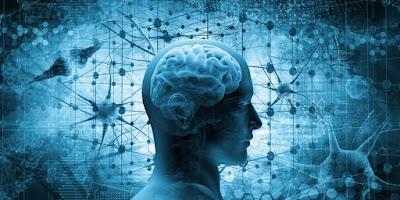Cognitive Neuroscience:
Cognitive Neuroscience is the study of prefrontal cortex,
from where the perception of things is initiated. Neuroscientists from
Princeton University collaborated with Intel to map the human mind in real
time. The goal of this work is to study the working of human brain in real time
– thinking, feeling, and reacting to stimuli. All these brain activities are tracked
using functional Magnetic Resonance Imaging (fMRI).
Decoding the brain’s activity data:
More than collecting data about the brain’s activity, analysing
the data and deducing a conclusion is more complex. Researchers at the
university, in collaboration with Intel Labs have developed a software that helps
the neuroscientists to map the collected data from the fMRI in real time.
The research that we’re doing uses fMRI human brain imaging to view what’s going on inside the brain as people think and feel. - Jonathan Cohen, a neuroscience professor and co-director of the Princeton Neuroscience Institute.
The data from fMRI is mentioned in terms of ‘voxel’. Technically,
a voxel is a three-dimensional pixel. It can be assumed as a pixel-sized cube. With
the help of the software, the neuroscientists were able to deduce thoughts and
emotions from neural activity and the amount of blood flow, based on the
sensory stimuli.
The neuroscientists have concluded that the mental
conditions like depressions, disorders, anxiety and schizophrenia are caused
due to disorders in prefrontal cortex. The neuroscientists opine that the study
of cortex can provide definite solutions to all the brain-related problems.
We hope to apply what we learn from these studies of human cognition to machine learning and artificial intelligence. This may lead to safer autonomous driving, quicker drug discovery and earlier detection of cancer. - Ted Willke, senior principal engineer at Intel Labs.
Open-source:
As a part of this research, the neuroscientists have
provided the tool Brain Imaging Analysis Kit (BrainIAK), that helps other
neuroscientists to work with their fMRI scans.
Intel has a team named Mind’s Eye, that works on converting
the data and patterns availed from cognitive neuroscience to apply them in
Machine Learning and Artificial Intelligence.
Virtual Screening:
Virtual Screening is a new technique that figures out the
set of molecules those are most likely to absorb a given drug and act immediately
for curing the disorder. Scientists suggest that the data collected from fMRI scans
can be used to analyse such “active” parts of the human brain, which is a
revolutionary step of technology towards better health.
Image source: Intel












0 comments:
Post a Comment